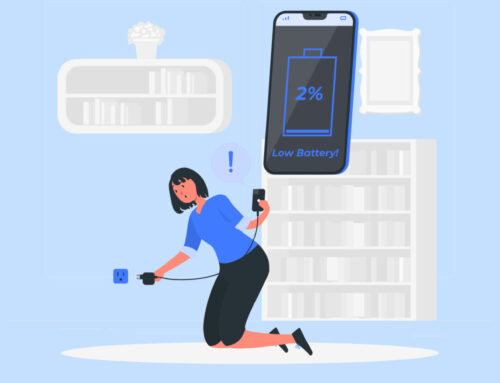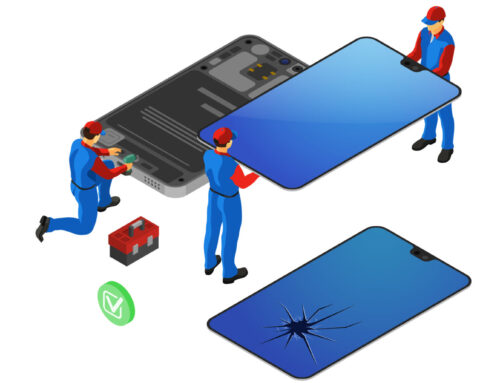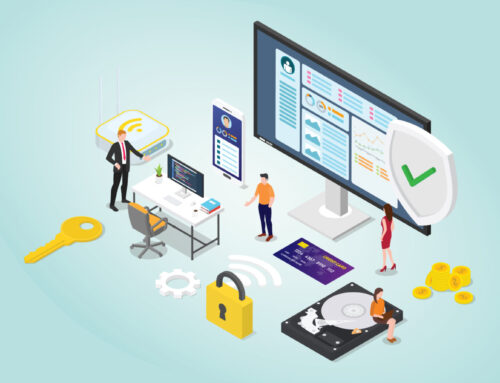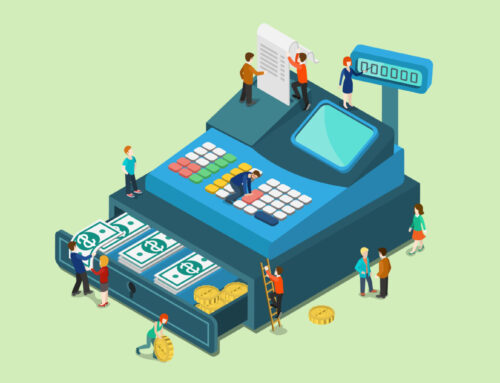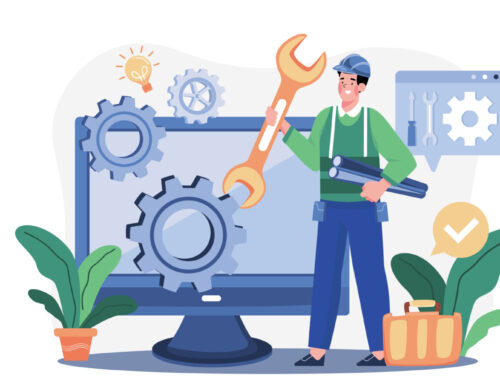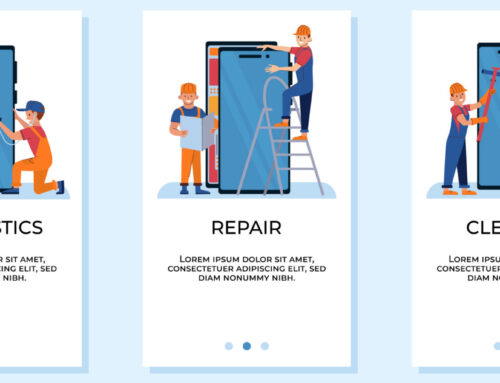Top 10 Most Common Laptop/Computer Problems and Solutions
Introduction
Laptops and computers are essential tools for many people, but they can also be frustrating when they don’t work properly. If you’re having problems with your laptop or computer, don’t despair! There are a number of common problems that you can troubleshoot yourself, and this blog will show you how.
In this blog, we’ll cover the top 10 most common laptop/computer problems and their solutions. We’ll also provide some tips for preventing these problems in the future. So whether your laptop won’t turn on, your screen is black, or your internet is down, we’ve got you covered.
By the end of this blog, you’ll be a laptop/computer troubleshooting expert! So what are you waiting for? Read on to learn how to fix your laptop or computer and get back to work.
Laptop/computer won’t turn on
This is a very common problem, and there are a few things you can check to try to fix it. First, make sure that the power cord is plugged in properly and that the power switch is turned on. If the laptop/computer is still not turning on, you may need to replace the battery.
Here are some additional steps you can take to troubleshoot this problem:
- Check the power outlet to make sure that it is working properly.
- Try using a different power cord.
- Remove the battery and then try to turn on the laptop/computer.
- If you have a desktop computer, check the power supply to make sure that it is working properly.
If you have tried all of these steps and the laptop/computer still won’t turn on, you may need to take it to a computer technician for further diagnosis.
The laptop/computer screen is black
If the laptop/computer screen is black, it could be a problem with the power supply, the graphics card, or the screen itself. You can try restarting the laptop/computer, updating the graphics drivers, or connecting an external monitor to see if the problem is with the screen.
Here are some additional steps you can take to troubleshoot this problem:
- Check the brightness settings to make sure that they are not turned down too low.
- Try pressing the “Fn” key and the “F5” key to see if this will bring the screen back on.
- If you have a desktop computer, check the connections to the monitor to make sure that they are secure.
If you have tried all of these steps and the laptop/computer screen is still black, you may need to take it to a computer technician for further diagnosis.
The laptop/computer is running slow
There are a number of things that can cause a laptop/computer to run slow, including too many programs running in the background, a virus or malware infection, or a hard drive that is full or fragmented. You can try closing any unnecessary programs, running a virus scan, or defragmenting the hard drive to improve performance.
Here are some additional tips for speeding up your laptop/computer:
- Disable startup programs that you don’t need.
- Clear your browsing history and cookies.
- Uninstall any programs that you don’t use anymore.
- Update your operating system and software.
If you have tried all of these tips and your laptop/computer is still running slow, you may need to upgrade your hardware or replace your laptop/computer.
The Laptop/computer is overheating
If your laptop/computer is overheating, it could be due to a number of factors, including a blocked vent, a dirty fan, or a faulty power supply. You can try cleaning the vents, replacing the fan, or using a cooling pad to improve airflow and reduce the temperature.
Here are some additional steps you can take to troubleshoot this problem:
- Check the laptop/computer’s fan to make sure that it is spinning freely.
- Clean the vents to remove any dust or debris that may be blocking airflow.
- Use a cooling pad to help dissipate heat.
- Avoid using the laptop/computer in a hot environment.
If you have tried all of these steps and your laptop/computer is still overheating, you may need to take it to a computer technician for further diagnosis.
Laptop/computer blue screen of death (BSOD)
A blue screen of death is a serious error that can occur on Windows computers. There are a number of things that can cause a BSOD, including a driver conflict, a hardware problem, or a software issue. If you get a BSOD, you can try restarting the computer, updating the drivers, or running a memory diagnostic to try to fix the problem.
Here are some additional steps you can take to troubleshoot this problem:
- Check the event log for any errors that may have occurred before the BSOD.
- Update the drivers for your hardware devices.
- Run a memory diagnostic to check for memory errors.
- Restore your computer to a previous point in time.
If you have tried all of these steps and you are still getting BSODs, you may need to take your computer to a computer technician for further diagnosis.
The laptop/computer won’t connect to the internet
If your laptop/computer won’t connect to the internet, there are a few things you can check. First, make sure that you are connected to a Wi-Fi network or that you have an Ethernet cable plugged in. If you are connected to a network, but you still can’t connect to the internet, you may need to update the network drivers or reset the network settings.
Here are some additional steps you can take to troubleshoot this problem:
- Check the Wi-Fi or Ethernet connection to make sure that it is secure.
- Restart your router or modem.
- Update the network drivers for your laptop/computer.
- Reset the network settings on your laptop/computer.
If you have tried all of these steps and you are still having trouble connecting to the internet, you may need to contact your internet service provider for help.
The laptop/computer keyboard is not working
If your laptop/computer keyboard is not working, it could be a problem with the keyboard itself, the keyboard drivers, or the operating system. You can try restarting the computer, updating the keyboard drivers, or using a different keyboard to see if the problem is with the keyboard itself.
Here are some additional steps you can take to troubleshoot this problem:
- Check the keyboard connections to make sure that they are secure.
- Clean the keyboard to remove any dust or debris that may be causing the problem.
- Update the keyboard drivers for your laptop/computer.
- Reset the keyboard settings on your laptop/computer.
If you have tried all of these steps and your keyboard is still not working, you may need to replace the keyboard.
Keyboard Not Working? How to Fix Windows Keyboard Not Typing Problem
The laptop/computer mouse is not working
If your laptop/computer mouse is not working, it could be a problem with the mouse itself, the mouse drivers, or the operating system. You can try restarting the computer, updating the mouse drivers, or using a different mouse to see if the problem is with the mouse itself.
Here are some additional steps you can take to troubleshoot this problem:
- Check the mouse connections to make sure that they are secure.
- Clean the mouse to remove any dust or debris that may be causing the problem.
- Update the mouse drivers for your laptop/computer.
- Reset the mouse settings on your laptop/computer.
If you have tried all of these steps and your mouse is still not working, you may need to replace the mouse.
The laptop/computer speakers are not working
If your laptop/computer speakers are not working, it could be a problem with the speakers themselves, the audio drivers, or the operating system. You can try restarting the computer, updating the audio drivers, or connecting external speakers to see if the problem is with the speakers themselves.
Here are some additional steps you can take to troubleshoot this problem:
- Check the volume settings to make sure that they are not turned down too low.
- Check the audio connections to make sure that they are secure.
- Update the audio drivers for your laptop/computer.
- Reset the audio settings on your laptop/computer.
If you have tried all of these steps and your speakers are still not working, you may need to replace the speakers.
The laptop/computer won’t print
If your laptop/computer won’t print, it could be a problem with the printer itself, the printer drivers, or the operating system. You can try restarting the computer, updating the printer drivers, or connecting the printer to a different computer to see if the problem is with the printer itself.
Here are some additional steps you can take to troubleshoot this problem:
- Check the printer connections to make sure that they are secure.
- Check the printer’s status to make sure that it is turned on and ready to print.
- Update the printer drivers for your laptop/computer.
- Reset the printer settings on your laptop/computer.
If you have tried all of these steps and your printer is still not printing, you may need to contact the printer manufacturer for help.
Conclusion
In conclusion, there are a number of common laptop/computer problems that you can troubleshoot yourself. By following the tips in this blog, you can fix your laptop or computer and get back to work quickly.
Here are some additional tips for preventing laptop/computer problems in the future:
- Keep your software up to date. Software updates often include bug fixes and security patches that can help to prevent problems.
- Back up your data regularly. This will help you to recover your data if your laptop or computer does crash.
- Don’t overload your laptop/computer. Too many programs running at the same time can slow down your computer and lead to problems.
- Take care of your laptop/computer. Avoid dropping or spilling liquids on it, and clean it regularly to remove dust and debris.
By following these tips, you can help to keep your laptop or computer running smoothly for years to come.
I hope this blog has been helpful.
Thank you for reading!
BytePhase: The All-In-One Repair Shop Management Software to Improve Efficiency and Productivity
BytePhase is a powerful, all-in-one repair shop management software that helps businesses improve their efficiency and productivity. With BytePhase, you can track your inventory, manage your orders, communicate with customers, and more.
Some of the key features of BytePhase include:
- Repair Ticket Management: By reducing losses with checklists, a repair ticket management system can help your shop be more efficient, save time and increase productivity
- POS or Sale management: Maximize Your Profits with Our Efficient Sale Management Software. With our software, you can easily create and send invoices, process payments, and track expenses, helping you to manage and optimize your sales
- Own Branding: Make your repair shop management software stand out in a crowded market with your own branding.
- Communication: Communicate with your customers and technicians through the platform. Stay Connected with Your Customers Anytime, Anywhere using SMS, Push notifications and Email.
Discover the perfect solution, BytePhase, for repair shops aiming to enhance efficiency and productivity. With its powerful features and user-friendly interface, BytePhase streamlines operations, saves time, elevates customer satisfaction, and propels business growth.


